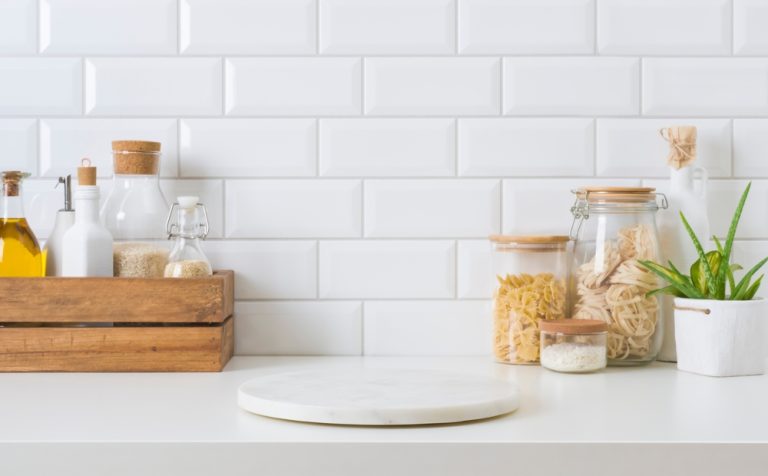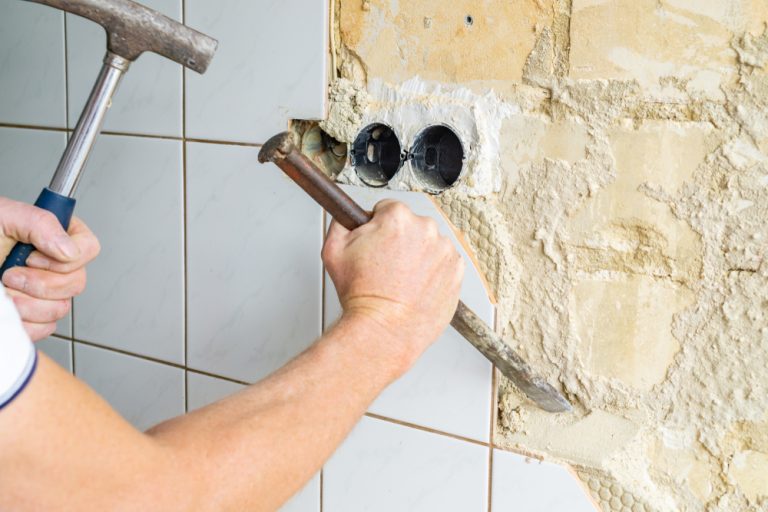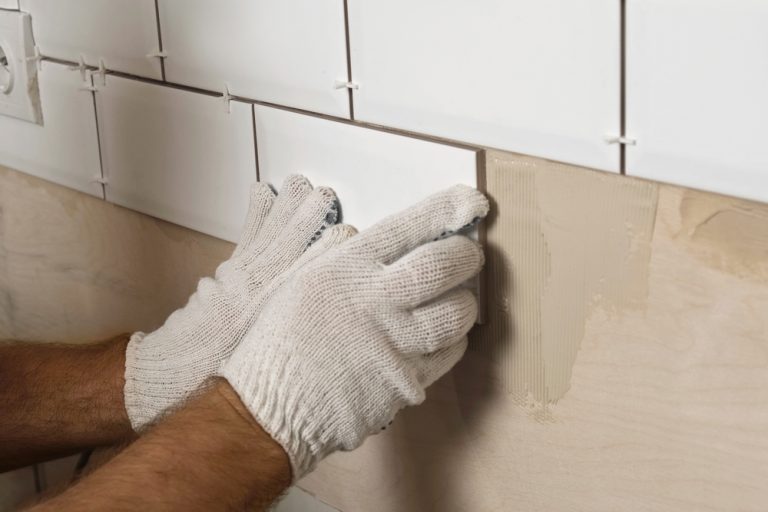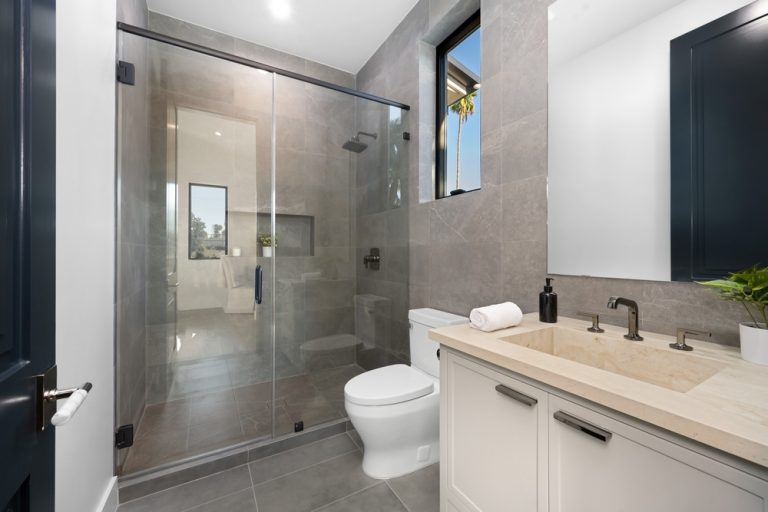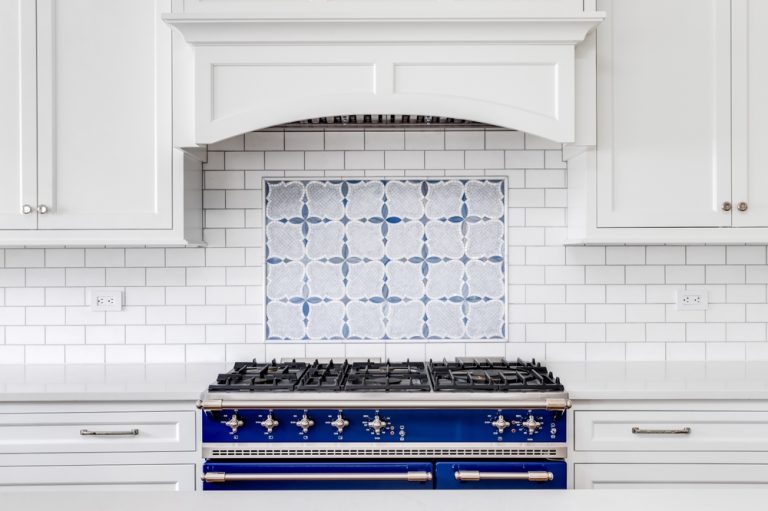How to Update Kitchen Floor Tiles Without Removing Them?

If your kitchen floor tiles are looking outdated but the thought of removing them seems overwhelming, you’re not alone. Many homeowners face the challenge of wanting a fresh, modern look without the hassle of tearing up old tiles. The good news is, there are several creative and cost-effective ways to update your kitchen floor tiles without removing them.
In this guide, we’ll explore various methods on how to update kitchen floor tiles without removing them, so you can achieve a beautiful new floor with less effort and expense.
Why Update Kitchen Floor Tiles Without Removal?
Before diving into the methods of updating kitchen floor tiles, it’s important to understand why you might choose to keep the existing tiles in place.
Cost-Effective Solution
- Save Money: Removing old tiles and installing new ones can be expensive. By updating the existing tiles, you can save on labor costs and materials, making it a more budget-friendly option.
- Avoid Major Renovations: Tearing up old tiles can be a time-consuming and disruptive process. By updating the tiles without removal, you can avoid the mess and inconvenience of a full renovation.
Preserve the Integrity of the Floor
- Less Risk of Damage: Removing tiles can sometimes damage the subfloor or surrounding areas. By leaving the tiles in place, you reduce the risk of causing further issues that may require additional repairs.
- Maintain Structural Stability: In some cases, the existing tiles provide structural stability to the floor. Keeping them in place ensures that you don’t compromise the integrity of the floor.
Eco-Friendly Approach
- Reduce Waste: Updating rather than replacing your kitchen floor tiles is an eco-friendly choice. It reduces the amount of waste sent to landfills and minimizes the environmental impact of producing and transporting new materials.
Also Read – What Size Tile for Kitchen Backsplash?
Methods for Updating Kitchen Floor Tiles Without Removal
There are several effective methods for updating your kitchen floor tiles without removing them. Each approach offers a unique way to refresh your space, depending on your style preferences and the condition of your existing tiles.
Painting the Tiles
- Tile-Specific Paint: One of the most popular methods for updating kitchen floor tiles is painting them. Use a tile-specific paint that’s designed to adhere to the glossy surface of tiles and withstand foot traffic.
- Step-by-Step Process: Start by cleaning the tiles thoroughly to remove any dirt or grease. Sand the tiles lightly to create a rough surface for the paint to adhere to. Apply a primer designed for tiles, followed by the tile paint. You may want to apply multiple coats for full coverage. Finish with a clear sealer to protect the paint and ensure durability.
- Customization Options: Painting allows you to completely transform the color of your floor tiles. You can choose a solid color, create patterns, or even use stencils to add decorative designs.
Applying Tile Stickers or Decals
- Peel-and-Stick Solutions: Tile stickers or decals are an easy and affordable way to update your kitchen floor tiles without removing them. These peel-and-stick products are designed to cover existing tiles and come in a wide range of colors, patterns, and textures.
- Installation Process: Start by cleaning the tiles thoroughly. Measure your tiles to ensure the stickers or decals fit correctly. Carefully apply the stickers, smoothing out any air bubbles as you go. These products are typically waterproof and durable, making them suitable for kitchen floors.
- Temporary or Permanent: Tile stickers are often removable, making them a great option if you want a temporary update. However, high-quality options can be used as a more permanent solution as well.
Covering Tiles with Vinyl Flooring
- Vinyl Plank Flooring: Vinyl plank flooring is a popular choice for covering existing tiles. It’s durable, waterproof, and available in a variety of designs that mimic wood, stone, or tile.
- Installation Process: Vinyl planks can often be installed directly over your existing tile floor without the need for adhesives. This floating floor method involves snapping the planks together over a thin underlayment. The result is a smooth, new floor without the need for tile removal.
- Benefits of Vinyl: Vinyl flooring is easy to clean, resistant to stains, and comfortable underfoot. It’s also an excellent choice if your existing tiles are uneven or damaged, as the planks can create a uniform surface.
Using Floor Rugs or Mats
- Decorative Coverings: Floor rugs or mats are an instant way to update your kitchen floor without any permanent changes. They add color, texture, and warmth to your kitchen, and can easily be changed out when you want a new look.
- Placement Tips: Consider placing rugs in high-traffic areas like in front of the sink, stove, or island. Choose materials that are easy to clean and resistant to moisture, such as synthetic fibers or washable cotton.
- Layering Options: If you have a large kitchen, consider layering rugs of different sizes to create a cohesive and stylish look. This can help define different areas within the kitchen and add visual interest.
Resurfacing with Epoxy Coating
- Durable Finish: Epoxy coating is a durable and long-lasting solution for updating kitchen floor tiles. It creates a seamless, high-gloss finish that can withstand heavy use and is resistant to stains, moisture, and scratches.
- Application Process: Start by thoroughly cleaning and sanding the tiles. Apply a primer, followed by the epoxy coating, which is typically applied in two layers. You can choose a solid color or add metallic flakes or patterns for a custom look. Once the epoxy has cured, it creates a strong, protective layer over the existing tiles.
- Professional Help: While it’s possible to apply epoxy coating yourself, hiring a professional can ensure a flawless finish, especially if you’re looking for a specific design or effect.
Pros and Cons of Updating Kitchen Floor Tiles Without Removal
Before deciding on a method for updating your kitchen floor tiles, it’s important to weigh the pros and cons of each approach.
Pros
- Cost Savings: All of the methods mentioned are generally more affordable than removing and replacing tiles. They allow you to achieve a new look without the expense of new materials and labor.
- Less Disruption: Updating tiles without removal is typically faster and less disruptive than a full renovation. You can often complete these projects over a weekend with minimal mess.
- Versatility: These methods offer a wide range of design options, allowing you to customize your kitchen floor to your liking. Whether you prefer a bold, modern look or something more traditional, there’s a solution that fits your style.
Cons
- Durability Concerns: Some methods, like painting or using decals, may not be as durable as replacing the tiles. High-traffic areas may show wear over time, requiring touch-ups or replacements.
- Surface Preparation: Proper preparation is crucial for achieving good results. Skipping steps like cleaning or sanding can lead to poor adhesion and a less durable finish.
- Limited to Existing Layout: These methods work within the constraints of your existing tile layout. If you dislike the size, shape, or pattern of your current tiles, covering them may not fully address your design concerns.
Tips for Choosing the Best Update Method for Your Kitchen Floor Tiles
When deciding how to update kitchen floor tiles without removing them, consider the following tips to choose the best method for your space:
Assess the Condition of Your Tiles
- Check for Damage: Ensure your existing tiles are in good condition before applying any updates. Cracked, loose, or heavily damaged tiles may require replacement before proceeding with any of the methods mentioned.
- Consider Surface Texture: Smooth, even tiles are ideal for painting or applying decals. If your tiles have a textured surface, you may need to spend more time on surface preparation or choose a method like vinyl flooring that can cover imperfections.
Think About Longevity
- Temporary vs. Permanent Solutions: Consider whether you’re looking for a temporary update or a long-term solution. Methods like painting or using decals are great for short-term updates, while vinyl flooring or epoxy coating offer more durable options.
- Maintenance Requirements: Evaluate how much maintenance you’re willing to commit to. Some methods, like epoxy coating, are low-maintenance once applied, while others, like painted tiles, may require touch-ups over time.
Align with Your Design Goals
- Match Your Style: Choose an update method that aligns with your overall kitchen design. Whether you want to add a pop of color, create a sleek, modern look, or add texture and warmth, there’s an option that fits your aesthetic.
- Coordinate with Other Elements: Consider how your updated floor tiles will coordinate with other elements in your kitchen, such as cabinets, countertops, and backsplash. Aim for a cohesive look that ties the entire space together.
Conclusion
Learning how to update kitchen floor tiles without removing them opens up a world of possibilities for refreshing your kitchen’s look without the hassle of a full renovation. Whether you opt for painting, applying decals, covering with vinyl flooring, adding rugs, or resurfacing with epoxy, each method offers unique benefits and can transform your kitchen floor with minimal disruption.
By carefully assessing the condition of your tiles, considering the longevity of the update, and aligning your choice with your design goals, you can achieve a stunning, updated kitchen floor that breathes new life into your space. With these creative solutions, your kitchen can have a fresh, modern look without the time, cost, or mess of removing old tiles.

